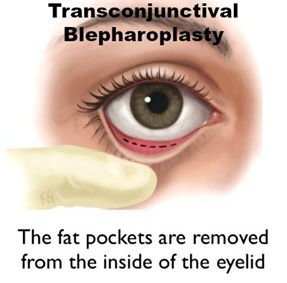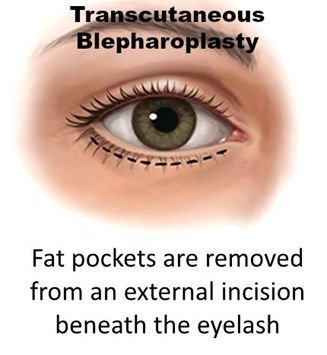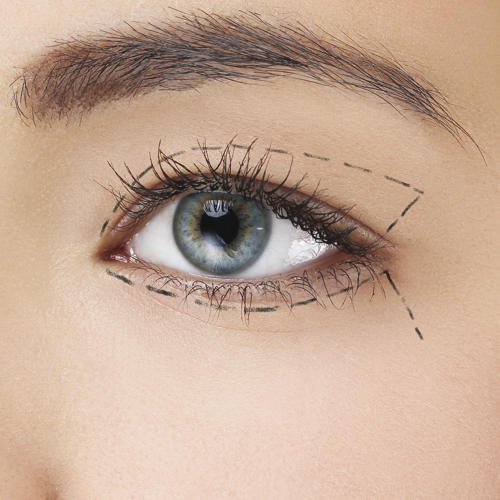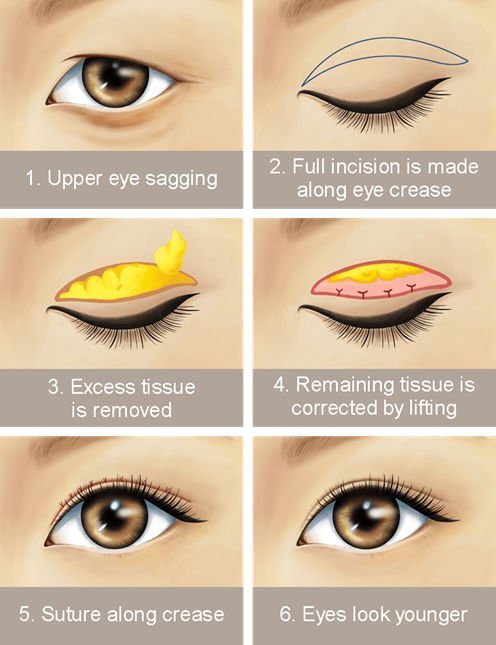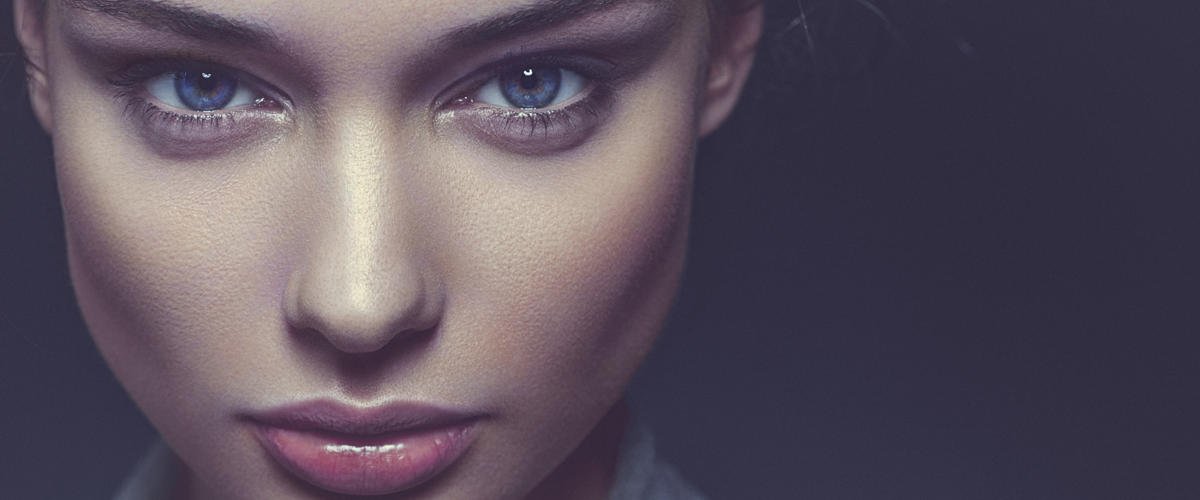
Upper Eyelid Surgery
Eyelid surgery, or blepharoplasty, is a surgical procedure to improve the appearance of the eyelids.
View Before & After Gallery Post Operative Instructions
Whether you want to improve your appearance or are experiencing functional problems with your eyelids, eyelid surgery can rejuvenate the area surrounding your eyes.
Specifically, eyelid surgery can treat:
Loose or sagging skin that creates folds or disturbs the natural contour of the upper eyelid, sometimes impairing vision
Excess fatty deposits that appear as puffiness in the eyelids
Appearance of always looking tired
About the Procedure
To perform an Upper Blepharoplasty you have the option of being under local or general anesthetic. A small incision is made along the natural crease of your eyelid. The excess skin and any fat pockets will be cut out. You will have dissolvable stitches along the crease where the incision was made. Please see the diagram below.
Recovery
During your eyelid surgery recovery, lubricating ointment on the incision and cold compresses may be applied.
You will be given specific instructions that may include how to care for your eyes, specific concerns to look for at the surgical site or in your overall health, and when to follow-up with Dr. Jaggi.
Initial healing may include some swelling, bruising, irritation or dry eyes, and discomfort that can be controlled with medication and cold compresses. Irritation at the incision sites is also possible.
You will be able to return to work within 3-4 days.
Lower Eyelid Surgery
Eyelid surgery, or blepharoplasty, is a surgical procedure to improve the appearance of the under eyelids.
View Before & After Gallery Post Operative Instructions
Whether you want to improve your appearance or are experiencing functional problems with your eyelids, eyelid surgery can rejuvenate the area surrounding your eyes. People who suffer from puffy or the appearance of "Tired Eyes" usually opt for the Lower Blepharoplasty.
Specifically, lower Blepharoplasty surgery can treat:
Bags under the eyes
Drooping lower eyelids that reveal white below the iris
Excess skin and fine wrinkles of the lower eyelid
Appearance of always looking tired
Excess fatty deposits that appear as puffiness in the under eyelids
Who is not a good Candidate for Lower Blepharoplasty?
Individuals that have not undergone Laser eye surgery within two years
Individuals who suffer from Dry Eye syndrome
About the Procedure
There are two types of Lower Blepharoplasty surgeries. The most common is "Transconjunctival Blepharoplasty" which is an incision made within the eyelid. Fat deposits are removed from under the eye. The incision does not need stitches; it closes up on its own. Generally there isn't any type of care for this incision, but you may need eye drops depending on your recovery. Please see the diagram below.
The other type of Lower Blepharoplasty is called "Transcutaneous Blepharoplasty." This is when the incision is on the outside of the lower lid. This is a less common surgery and only done when there are other factors to consider. Please see the diagram below.
Recovery
During your eyelid surgery recovery, cold compresses may be applied. You may need eye drops.
You will be given specific instructions that may include how to care for your eyes, specific concerns to look for at the surgical site or in your overall health, and when to follow-up with your surgeon.
Initial healing may include some swelling, bruising, irritation or dry eyes, and discomfort that can be controlled with medication and cold compresses. Irritation at the incision sites is also possible.
You will be able to return to work within 3-4 days.
Preparing For Your Surgery
Avoid taking aspirin, anti-inflammatory drugs, and herbal supplements as they can increase bleeding. Please arrange for a responsible adult to take you and pick you up from your surgery and stay with you for the first 24 hours after surgery.
